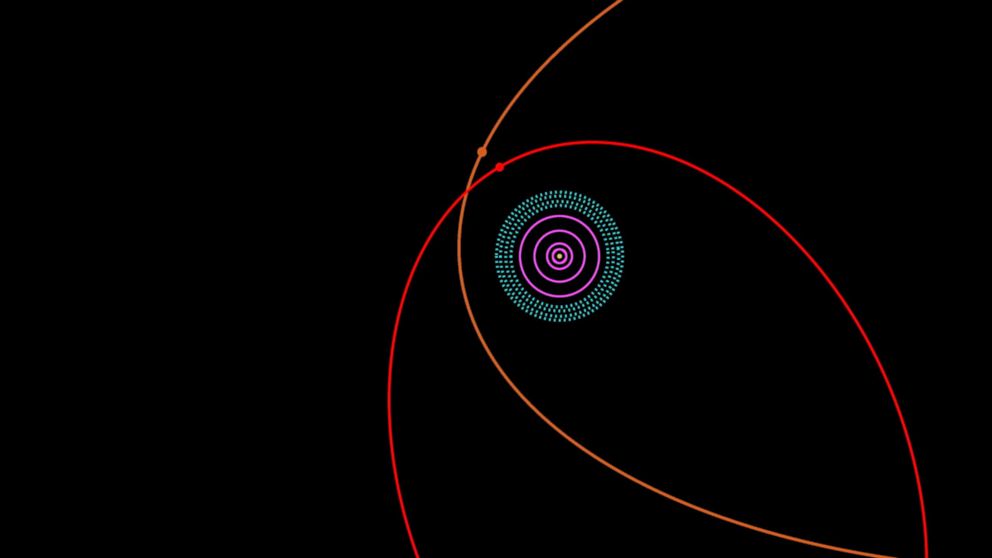Newly Discovered Dwarf Planet Hints at 'Super Earth' in Far Reaches of Solar System
New planet hints at possible 'Super Earth' in far reaches of the solar system.

March 27, 2014— -- There's more to the solar system beyond Pluto's orbit. Researchers have discovered a new dwarf planet nearly 7.5 billion miles away from the sun.
Even more intriguing, the discovery suggests the possibility of a "Super Earth" -- objects several times the mass of the Earth -- orbiting the sun at such vast distances that the sun would appear as just another star.
The planet, currently called 2012 VP113, provides astronomers a hint that a whole class of other planets could be waiting to be discovered. Scientists call it "VP" for short, or "Biden," after Vice President Joe Biden.
Scott Sheppard, an astronomer at the Carnegie Institution in Washington, D.C., described the planet as approximately 450 kilometers in size with a faint red hue. "It has a temperature around 15 degrees Kelvin," or -432 degrees Fahrenheit, he told ABC News. "If you were on its surface, the sun would look just like any other star in the night sky."
Even though 2012 VP113 is the new guy on the block, it's not alone. Its closest neighbor is Sedna, another dwarf planet that exists past the Kuiper Belt, approximately 4 billion miles from the sun. "When the Kuiper belt ends, it's like no man's land," said Sheppard. "No one was expecting to find anything out there."
When Sedna was discovered in 2003, scientists didn't know whether it was a unique object or the first glimpse at a new class of celestial objects. With 2012 VP113's discovery, Sheppard is confident that there are more planet-like objects out there. "Sedna and VP113 are just the tip of the iceberg," he said.
It's not just the planets' existences themselves that has Sheppard intrigued, but their orbits as well. "These orbits are very elongated and eccentric," he said. "What we currently know about the solar system can't create the orbits of these objects. It means that something was vastly different in our solar system back then."
Sheppard's research can be found in the most recent issue of the journal Nature.




